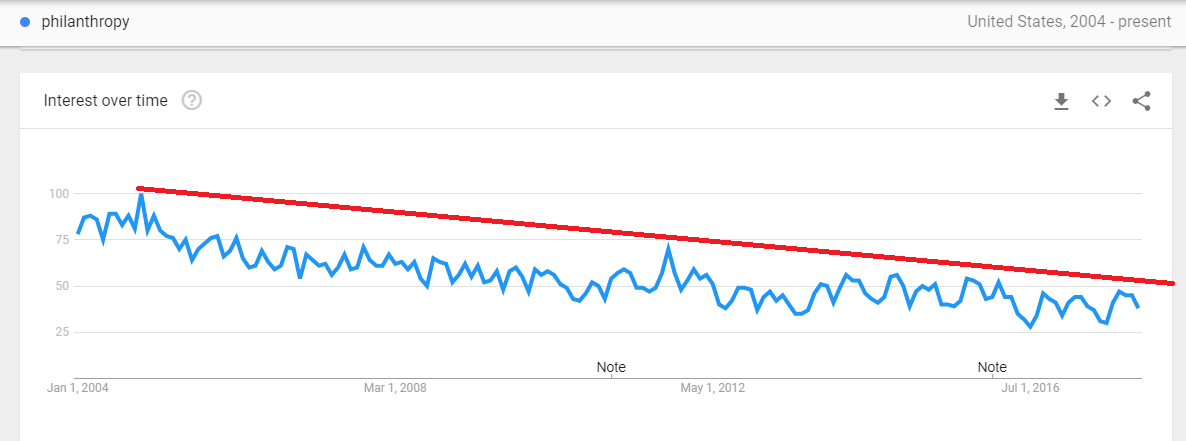Divinity School graduates are thinking about how to create ‘good’ communities, sustainable investing, and moral leadership in economics.
One has to admire HDS for being willing brag a little on the professional achievements of their alumni through this narrative and easy to read storytelling format.
This is a model that we strongly encourage be used by the ‘public spheres’ who serve and support low income and low wealth people, particularly HBCU’s, their collegiate Fraternities and alumni associations, and other ‘national’ trade associations.
Beyond this simple communications strategy…
We wholeheartedly admire that some businesses are evidently thinking about how to engage and integrate morality into their investing decisions, and HDS specifically is grooming its alumni and students to think about how to best use their talent and access to financial capital.
There is tremendous potential and upside and endless opportunity abounds for people who choose to do this work.
Our morality meter.
Morality as measured through interest in ‘philanthropy’ in America is going down over the last 10 years… meanwhile, concerns of immorality are rising.
Still we remain optimistic on philanthropy and philanthropic investing.
If America determines that there is inherent instability of wealth concentration to civil societies, it is likely that interest in philanthropy may rise.
Examining this above graph, it is no surprise why the wealth gap by race has widened since the 1960’s, and concerns on race-ism are rising. National sentiment on philanthropy primarily among HNW white families has not been this low since the 1780’s, when America was being founded (1776) and slavery was a thriving and integral component of the American economy. For these reasons, it is certainly worth studying the American economy in the 1780’s and draw comparisons to today.
Examining the graph, it begs the questions…
- What caused the rise of interest in morality, as measured by philanthropy leading up to 1850’s?
- What happened in 1850 that caused interest in philanthropy to hit its peak? (and)
- What was the sociological result and IMPACT of the soaring national interest in philanthropy just after the 1850’s?
Examining for a moment, the latter… what was the impact of national interest in philanthropy?
We do know that many generous white benefactors began pouring large amounts of money into founding colleges and institutions of higher learning for ‘colored people’. Nearly ALL the “Historically Black Colleges” and universities (HBCU’s) were founded just after this peak, with several being being founded in 1867 alone. The Duke Endowment, which provides 4% of its proceeds to Charlotte HBCU JCSU, was established just after this peak, in 1924, established by an businessman and tobacco industry heir who was born in 1850. Suffice it to say, at the peak of morality in America, some of the greatest American philanthropists were born.
Even potentially more significant than the founding of HBCU’s, the Great Migration began just after the turn of the 20th century and lasted through the 1960’s. This probably represented the ultimate hallmark piece of evidence left as a byproduct of peak philanthropic sentiment in America.
Wherein, gracious HNW white benefactors took it upon themselves to selectively RECRUIT ‘colored people‘ to leave the American South where they were being lynched and tortured, leave their churches and homes often against the interests of white Southerners, and move North for good paying jobs. America must do more to celebrate those visionary philanthropists, who sought to advance the quality of life for the descendants of American slaves.
Arguably, if it wasn’t but for this 1850’s spike in morality, neither the founding of HBCU’s nor the Great Migration would have ever taken place.
While everyone knows that HBCU’s are more likely to have trained Black America’s professionals than PWI and the HBCU has done more to advance the education of people who would have been slaves in years prior, the Great Migration should be properly credited with being the ONLY event in the history of this country of which we are aware that has had ANY past performance in reducing the wealth gap by race, and creating more economic opportunity for economically disadvantaged people.
Notably, it was NOT merely the act of moving North, that reduced this gap. It certainly wasn’t ‘tax policy’, since global interest in philanthropy was peaking at least 10 years PRIOR to the introduction of the first Federal government income tax in America. Instead, what we know is that it was a national collective decision by HNW [white] families, to give their wealth directly TO economically disadvantaged people (ie, the descendants of slaves).
Alone, these are arguably the two most significant events in the history of America impacting Americans whose ancestors on this continent were once slaves, and neither of which would have ever taken place without a national revival on philanthropy.
We can only envision and imagine and we dream of what will be the byproducts of morality, when the roaring sound of morality, as measured by a national dialogue on philanthropy, surpasses its 1850’s high.
A day of rejoicing that would be…
*12/7/17 Update*
See the follow up article on this topic.
“Peak Philanthropy” and Other Contributors to the Great Migration
On log in and registration, members will see our draft version of selection criteria for ranking applications seeking philanthropic investing dollars. Register for access.

